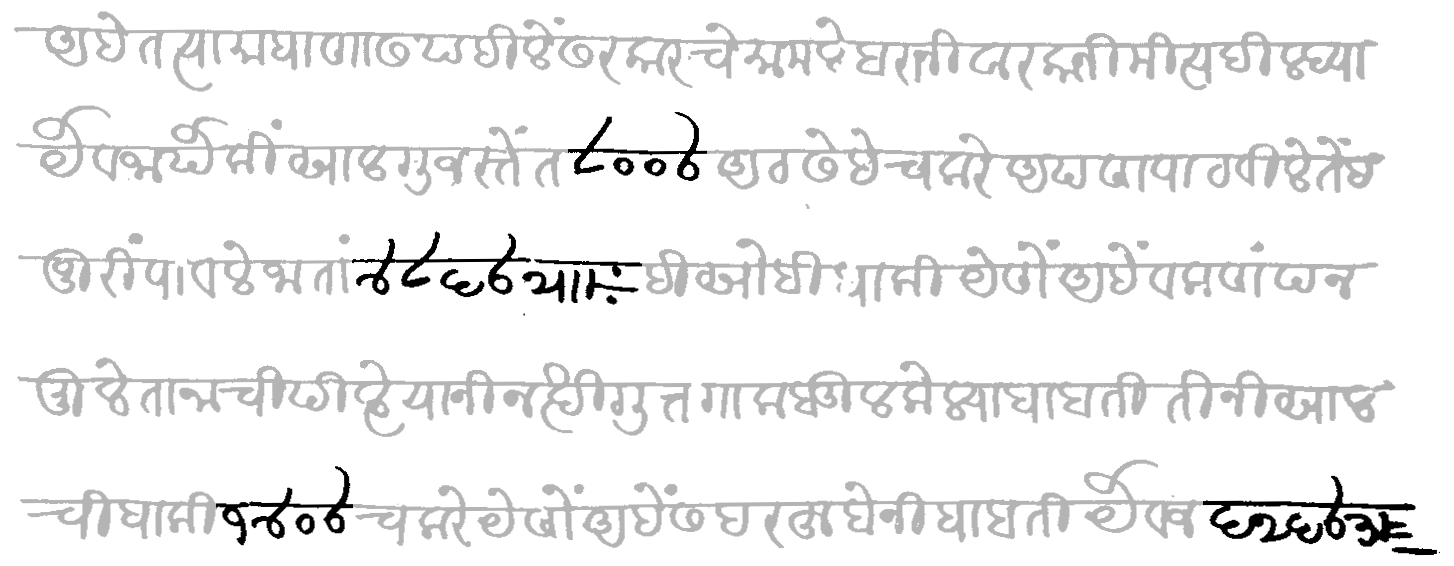Before the standardization of currency and monetary units
that followed the formation of the Republic of India
and other nation states in South Asia in the middle of
the 20th century, various forms of numerical notation
were used in the region.
Modi documents contain unique signs that are used for marking monetary
amounts. Two such signs are shown in the image below:

The character ꠷ is called आळी āḷī in Marathi. It represents
the absence of numbers and is written after whole amounts to indicate
that there are no fractions. In the image, the first highlighted
example is ८००꠷ ‘800/-‘ and the third is १४०꠷ ‘140/-‘. The ꠷ sign is
encoded in Unicode as U+A837 NORTH INDIC PLACEHOLDER MARK. (More
information on this and other signs is provided in my proposal to
encode Common Indic number forms
The other sign shown resembles the ÷ ‘division sign’ or obelus. It
is used in the highlighted examples two and four in the above image.
Based upon the context in which it is used, it could represent a
‘remainder’ sign, eg. the amount written and then some; or a
pāvalī `quarter’.

If there is anyone who is familiar with the use of these signs in
Modi, I would be happy to hear from you.